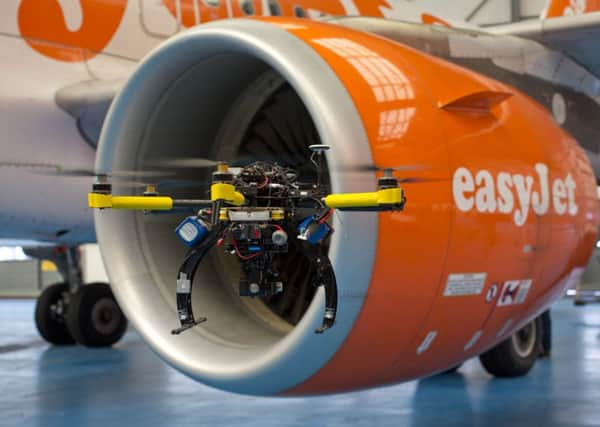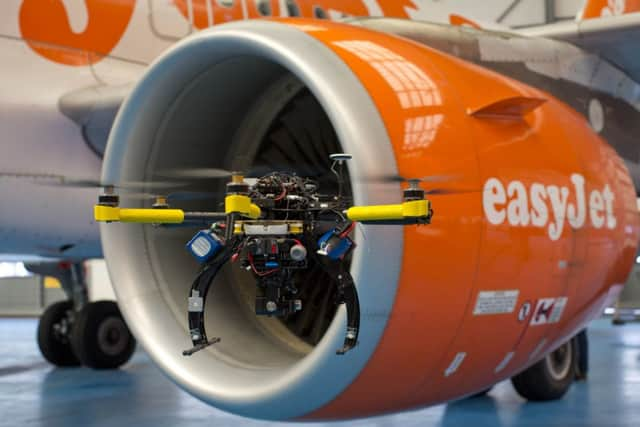EasyJet will use drones for airplane safety checks


The move is part a raft of innovations unveiled by the airline, which carries the most passengers from Scotland, which also includes virtuality-reality glasses for engineers, and “paperless” plane.
The drones, which are expected to be operating next year, will be able scan the exterior of EasyJet’s 220 aircraft far faster and potentially more accurately than engineers, such as for checks after lightning strikes.
Advertisement
Hide AdAdvertisement
Hide AdEasyJet head of engineering Ian Davies said: “Drone technology could be used extremely effectively to help us perform aircraft checks.


“Checks that would usually take more than a day could be performed in a couple of hours and potentially with greater accuracy.”
Dr Arthur Richards, head of aerial robotics at the Bristol Robotics Laboratory, which is involved in the project, said: “Aircraft inspection is a great application for drones. Coupled with smart navigation and computer vision, they can get accurate data from really awkward places.”
In another first, virtual-reality glasses will enable engineers at EasyJet’s headquarters in Luton to see exactly what a pilot or engineer checking an aircraft at another airport is seeing, to help diagnose faults.
It is seen as particularly useful in far away airports on EasyJet’s 138 airport network, such as Sharm el Sheikh in Egypt and Tel Aviv in Israel.
Currently, photographs of faults have to be emailed back to base.
On board, EasyJet plans to create “paperless” planes - at least for staff - with cabin crew completing paperwork using an “e-paper” device, that feels like writing on paper.
In addition, pilots will use tablet devices, replacing heavy paper log books and navigational charts, which is expected to save nearly £300,000 a year in fuel.
Advertisement
Hide AdAdvertisement
Hide AdHowever, the airline stressed there were no plans for weight restrictions on passengers’ cabin baggage.
A spokeswoman said: “We do not want to reduce passenger benefits. We are looking for clever ways of reducing weight which they will not notice, like lightweight carpets.”
“Our aim is have drones across our network, including in Scotland, in a year or so.”
Chief executive Carolyn McCall said: “The advantage of these emerging technologies is threefold - freeing up our engineering team to undertake more skilled tasks, keeping our costs down which in turn keeps our fares low, and helping to minimise delays so maintaining our industry leading punctuality for our passengers.”
EasyJet carried 5.4 million passengers to and from Scotland in the last year, and has seven aircraft based in Edinburgh and four in Glasgow.
SEE ALSO